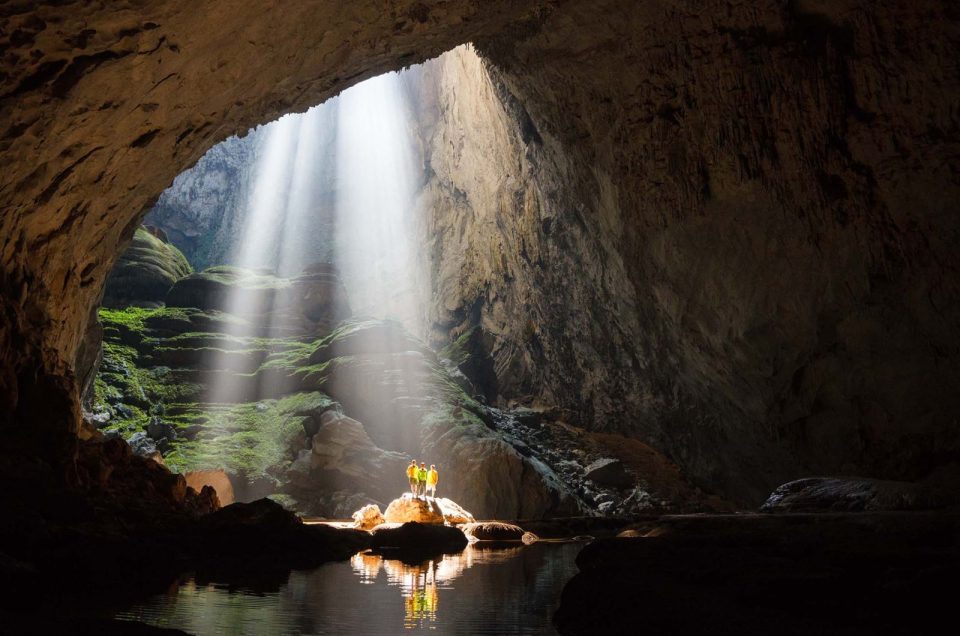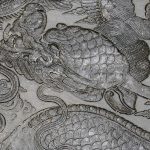Are you looking for adventure? In that case, you might like trekking in Vietnam. The nation has fantastic trekking opportunities with breathtaking scenery. Additionally, you might have thoughts of towering limestone mountains, tiers of rice fields, and deep highland valleys that will make your journey unique. Read on for a quick guide to the top spots and suggestions for trekking in Vietnam!
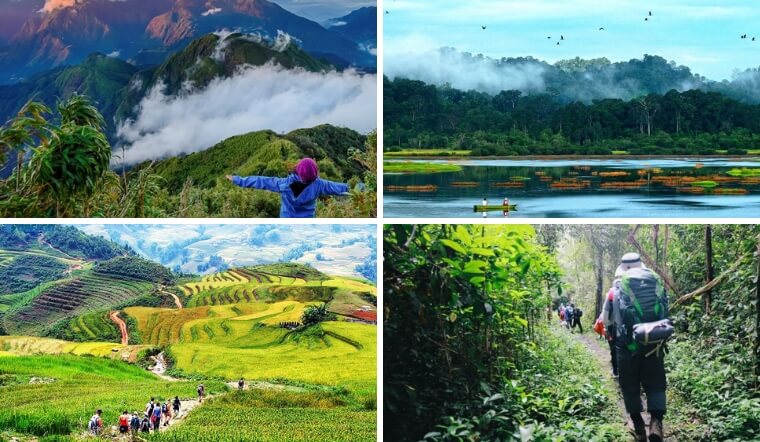
Essential Tips on Trekking in Vietnam
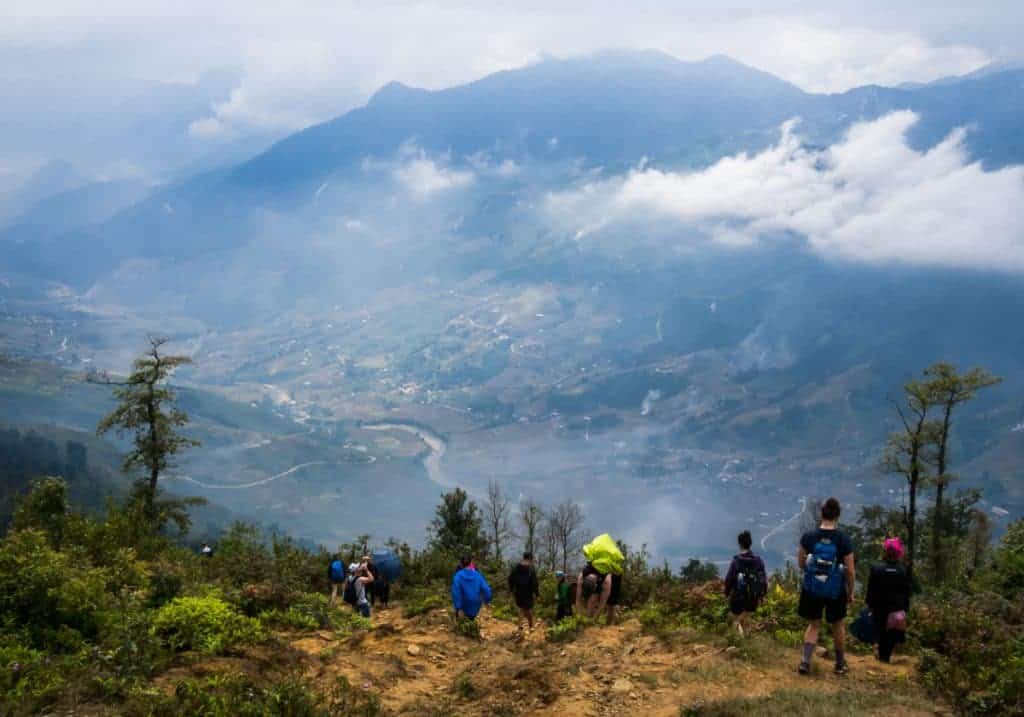
Take the following tips for consideration so that you can have the best experience when it comes to trekking in Vietnam.
Before Going on Treks
- Think about how long you will travel, what kind of place you want to see (ethnic villages, mountains or national parks, etc.), the period you are in Vietnam (it’s better to stay here in the dry season – the best time for trekking in Vietnam)
- Be well prepared and ready for physical and mental challenges
- Check out the weather forecast. It is not recommended to hike on rainy days when the roads are too slippery.
- Ask the local people for more instructions or consider hiring a local tour guide with you.
What to Take on Treks
- Enough food and water and a first-aid kit
- Hiking boots with high quality
- Raincoat or waterproof jackets and pants in case it rains
- Flashlight or headlamp
- GPS navigation devices and a map.
- For long hikes, bring your tent and warm sleeping bag
- Sunscreen and mosquito repellent
Best Places for Trekking in Vietnam
Sapa (Lao Cai)
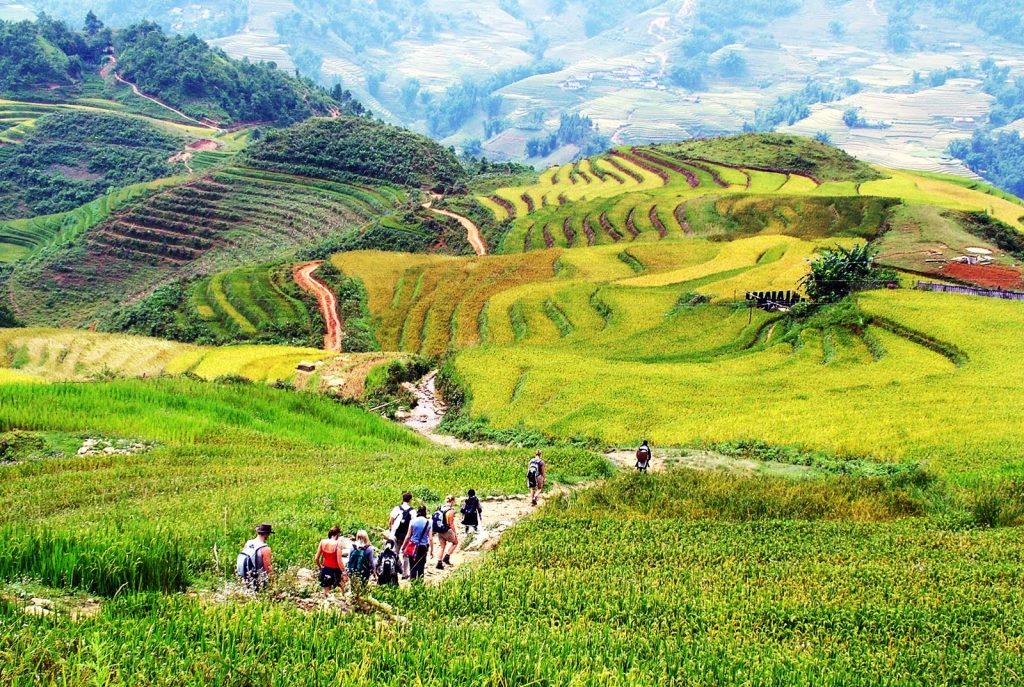
Trek difficulty: easy
Highlights: Sapa, which is quite a distance from Hanoi and directly adjacent to China, is renowned for its breathtaking mountains, jade-colored rice terraces, and distinctive culture as the home of several of the Vietnamese ethnic minorities. It provides a variety of stunning hiking routes, including those through Cat Cat village, Y Linh Ho village, Ta Phin village, Muong Hoa Valley, Ham Rong mountain, Sky Gate, etc. The highest mountain in Vietnam, Fansipan Mount (3143 m), is located near Sapa.
The best months to hike are March through May when the weather is dry and clean and September through November when you can see the terraces.
Getting there:
To the northeast of Hanoi, it is 320 kilometers. You can travel there on a bus, a rail, or a motorcycle that you must drive yourself. It should be noted that Sapa is a rugged and remote place, making it only suitable for serious motorcyclists.
Favored treks in Sapa:
If you decide to trek alone in Sapa, there is no precise map. The majority of individuals become immersed in the land’s beauty and are unable to escape. Therefore, the following trek routes are suggested for you if you want to experience a relatively easy trekking trip level:
Lao Chai Village (5 km from the town of Sapa)
Sin Chai Village (5 km from the town of Sapa)
Ta Van Village (10 km from the town of Sapa)
Hau Thao Village (11 km from the town of Sapa)
Ta Phin Village (12 km from the town of Sapa)
Ban Ho Village (21 km from the town of Sapa)
Recall the following:
Ask the locals first before snapping pictures of them. Sometimes you have to pay money to get them.
Make copies of every document you have in case you misplace the originals.
Offer to pay half the price for anything.
Mai Chau (Hoa Binh)
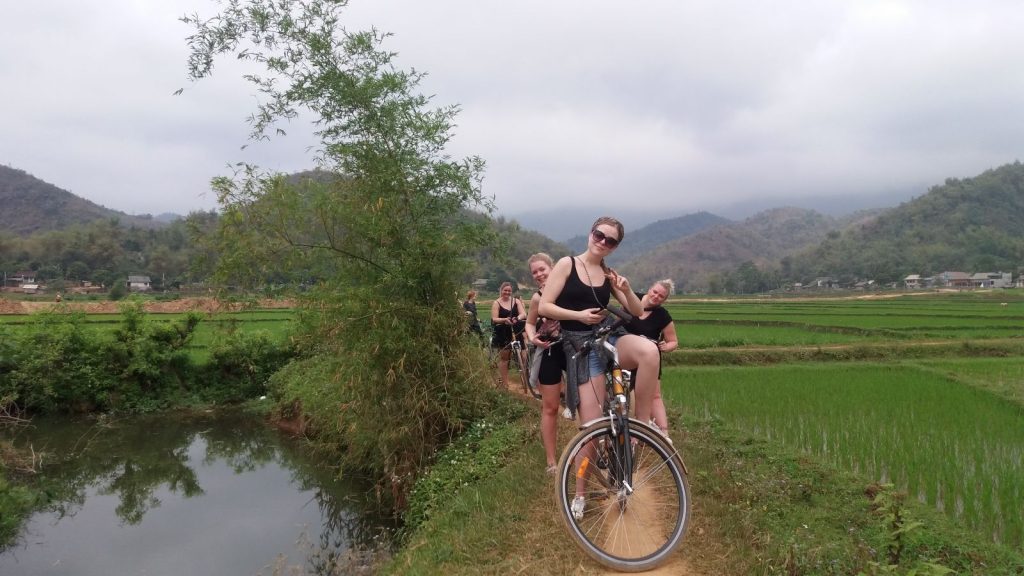
Trek difficulty: easy
Easy trekking is well-known in Mai Chau. This is the location to go if you are a newbie.
Highlights: Despite being only 150 km from Hanoi, Mai Chau has a completely different environment because to its picturesque rural valleys, calm mood, and laid-back atmosphere. Thac Bo Temple, Thung Khe pass, Mo Luong lake, White Rock pass, Chieu Cave, Go Lao waterfall, Hoa Binh lake, among other attractions, are worth visiting.
The ideal trekking season is from late September to early May.
You can take a bus from Hanoi’s My Dinh bus station to Mai Chau or opt to travel independently by motorbike.
Popular hikes in Mai Chau include:
For a taste of the H’mong and Thai people’s languid pace of life, visit Ban Buoc, Cun Pheo, Hang Kia,…
Mai Chau Valley, Pu Luong Nature Reserve, and Cuc Phuong National Park are good options for more difficult treks.
Pu Luong Nature Reserve (Thanh Hoa)
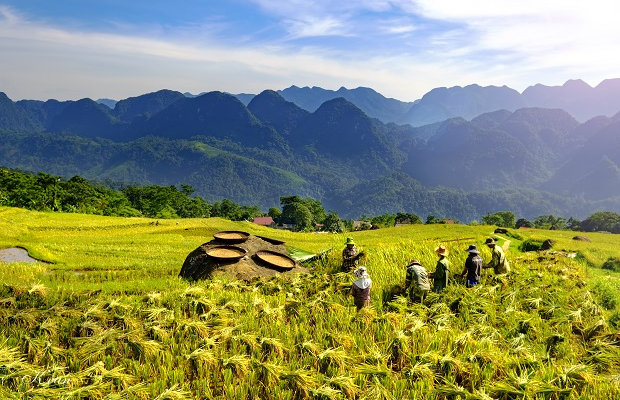
Level of trek: moderate to challenging
Highlights: If you are heading back to Hanoi from the middle of Vietnam, you must add Pu Luong nature reserve to your list. It is the combination of Northern Vietnam’s beauty with beautiful terrace rice fields as Sapa, the magnificent passes as Ha Giang and large fields as Mai Chau. Visiting Pu Luong reserve, you also have the chance to experience the daily life and culture of the Thai and Muong people.
Best time to trek: during rice harvest season, from September to October and from February to May.
How to get there: catch the shuttle bus that takes you directly to Pu Luong from Hanoi Old Quarter.
Popular treks in Pu Luong: A popular trekking adventure will take you to Pu Luong jungle and beautiful small villages like Hang, Kho Muong, Kia villages. Some popular trekking routes: Hieu village – Nua village, Nua village – Son village.
Things to keep in mind:
Although Pu Luong is a huge national forest, there are still restaurants and accommodation service areas. Therefore, you don’t need to worry about staying overnight there.
Ha Giang
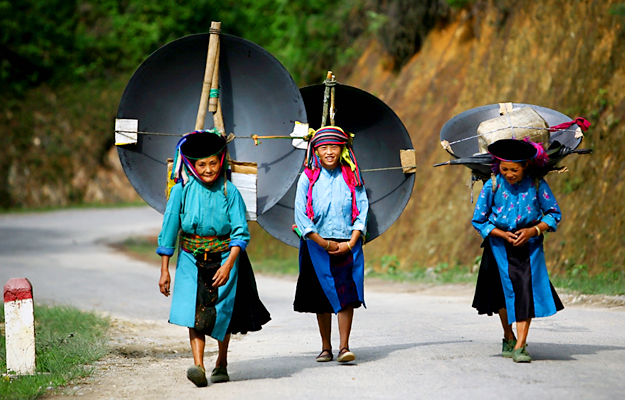
Level of trek: easy
Highlights: Ha Giang is also known as the “Final Frontier of Vietnam” for its sweeping views of carpets of flowers, karst mountains and colorful markets of ethnic minority communities. Their highlights include Yen Minh, Meo Vac valley, Ma Pi Leng Pass, Duong Lam village.
Best time to trek: October to December
Take a bus from the My Dinh bus station; it will take 6 to 8 hours to get there.
Favored treks in Sapa:
- Dong Van valley
- Si Phai Mountain Village
- Trung Son – Bo Dot – Hop Nhat
- Tam Son town (Heaven’s gate)
- Sky Path: Col de Ma Pi Len
Things to keep in mind: on the map, there is a road between Niem Son and Yen Minh, which is noted as a big road, but it’s actually a mountain track. The best route would be going from Meo Vac through Lung Phin.
Cat Ba National Park (Cat Ba Island)
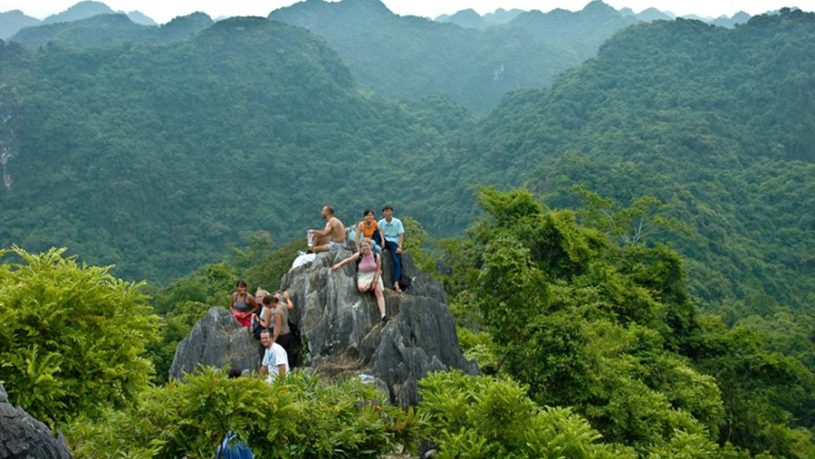
Level of trek: easy
Highlights: Located on Cat Ba island, Cat Ba National Park attracts tourists not only thanks to the beautiful sea but also a number of highlights and attractions, which make your trip promisingly enjoyable. Inside the national park, there is also a museum, a rehab center, a small zoo, etc. And, some viewpoints that you can find while hiking would be worth your going.
Best time to trek: from September to October
How to get there: The best way is to catch a shuttle bus in Nguyen Huu Huan street, Hanoi.
Popular treks in Cat Ba National Park:
- Kim Giao Forest – Ngu Lam Peak (1.5 km)
- Trung Trang & Uy Ban Grottoes (1.2 km)
- National Park HQ – Ao Ech – Viet Hai (14km trekking and walking)
Things to keep in mind:
- Fires, tree felling, branch cutting, and hunting are not allowed in the forest
- Watch the time out because the national park closes at 5 pm.
Cao Bang
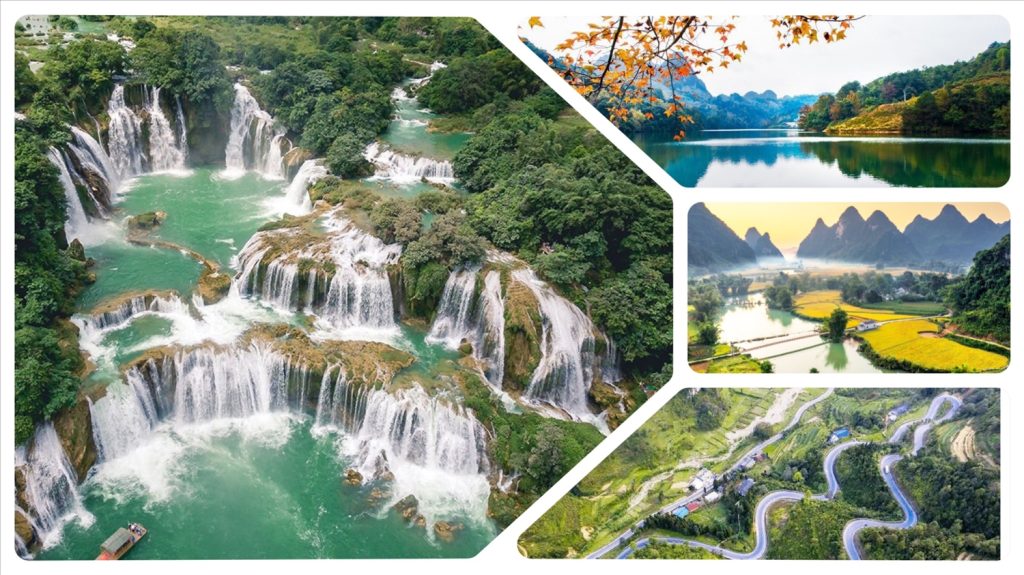
Level of trek: moderate
Highlights: Cao Bang is a frontier region of North Vietnam with immense beauty. The landscape here is famous for jagged mountains, thin winding roads, and sporadic rice paddies. Choosing Cao Bang as trekking trails, you should not miss these places: Ban Gioc Waterfalls, Nguom Ngao cave, Thang Hen Lake, Pac Bo cave, and Ky Sam Temple.
Best time to trek: from October to April
How to get there: You can take a bus in My Dinh or Gia Lam bus station in the morning or evening.
Popular treks in Cao Bang
- Ba Be National Park
- Pac Po cave – Trek Nam Nhung
- Tong Cot Village
- Ta Lung border town
Cuc Phuong National Park (Ninh Binh)
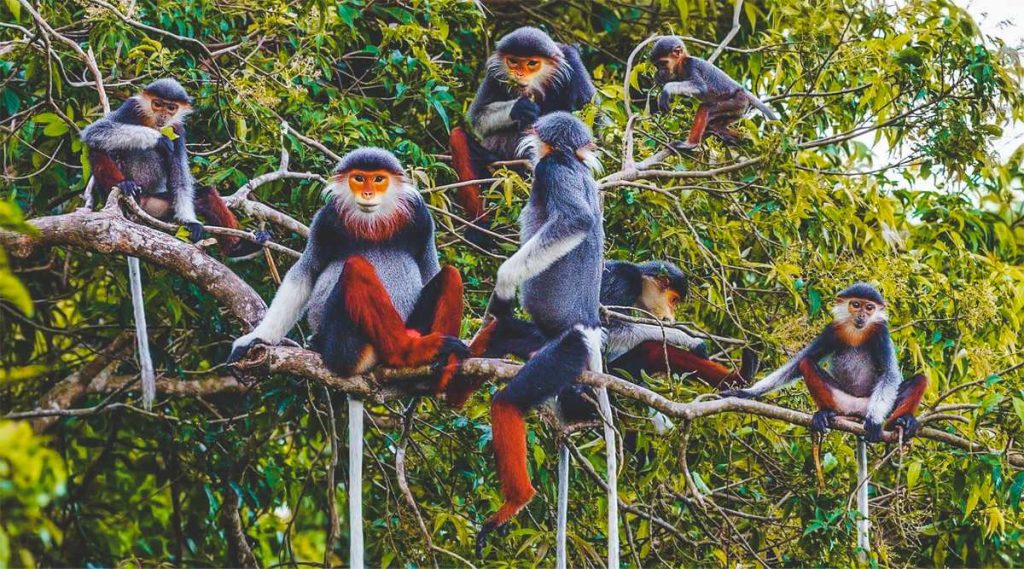
Trek difficulty: easy
Highlights: Cuc Phuong National Park is a well-liked tourism site that is 120 kilometres from Hanoi. You get the chance to see this location’s many ecosystems of flora and fauna by going there. Highlights include witnessing the 1000-year-old tree, touring the Endangered Primate Rescue Center, and birding and wildlife night-spotting. And trekking here is undoubtedly another thrilling activity.
Best time to trek: the dry season from December to April
How to get there: The distance is not too far and you have several ways to get to Cuc Phuong: going by train from Hanoi train station, catching a bus in My Dinh or Giap Bat bus station, or hiring a private car.
Popular treks in Cuc Phuong National Park:
- Cuc Phuong primary jungle – Muong Hoa village
- May Bac peak (700m above seawater)
Ba Be National Park (Bac Kan)
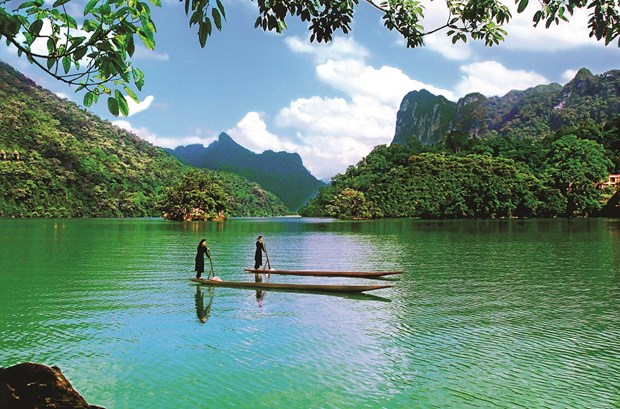
Trek difficulty: easy
Highlights: The National Park is located around the largest natural lake in Vietnam and is also referred to as Ba Be Lake. It has stunning landscape, including tall limestone mountains, deep valleys, and dense rainforests. You should try one of the many hiking trails available. A multi-day journey via karst outcrops, waterfalls, caverns, and rice fields is the finest way to see the area.
Best time to trek: from April to October
How to get there: book an online ticket for a bus. (price: USD 18~10)
Popular treks in Ba Be National Park:
- Po Lu village
- An Ma Island
- Puong Cave
- Dau Dang Waterfall
Cat Tien National Park (Dong Nai)
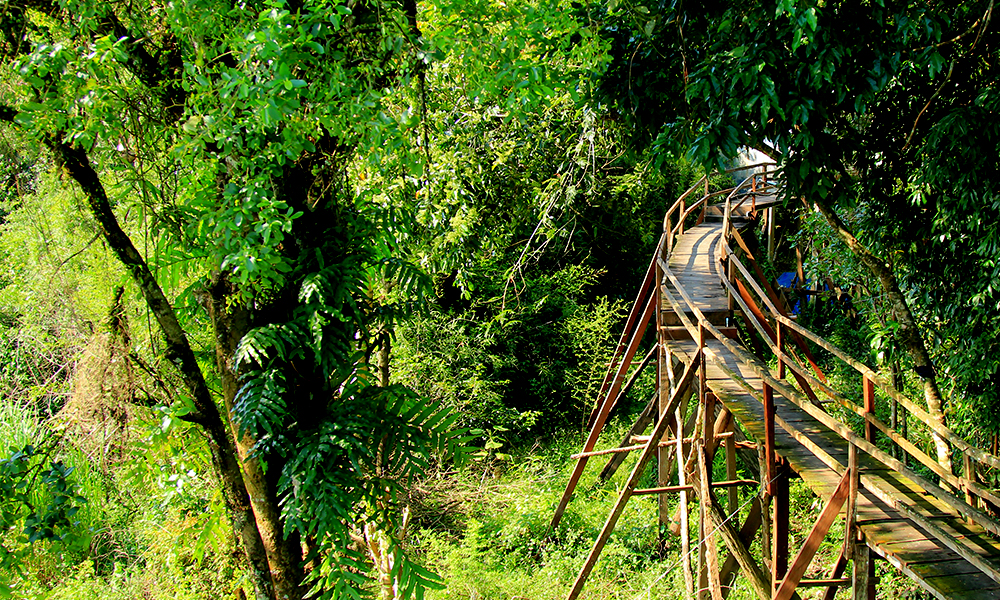
Trek difficulty: easy
Highlights: The Cat Tien National Park, which sits halfway between Ho Chi Minh City and Dalat, is a veritable biosphere reserve. Many of the most endangered species in the world are found there. It is the ideal location for hiking, camping, and staying in the center of a forest.
Best time to trek: from December to May when the paths are dry.
How to get there: catch a bus from Ho Chi Minh (VND 80.000) or ride your motorbike.
Popular treks in Cat Tien national park:
- 30 Botanic Garden Trails
- Ban Sau – Crocodile Lake
- Ta Lai Ethnic Village
Lang Biang Mountain (Da Lat)
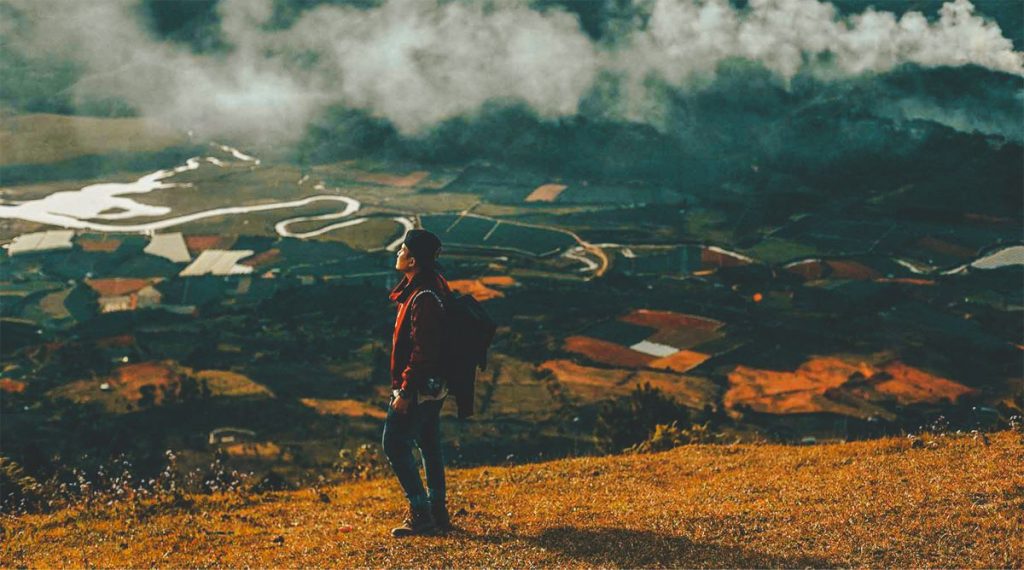
Level of trek: moderate
Highlights: The Lang Biang mountain, which is about 12 km from Dalat’s city, is not only a popular tourist destination but also the setting for a passionate love tale. Some racial and ethnic minorities live on the mountain, including the Lach and K’Ho. As a result, visiting Lang Biang Mountain allows visitors to experience both nature and a different culture. Even though it can be a little difficult, the climb up Lang Biang is worthwhile.
Best time to trek: from September to November
How to get there: catch a local bus No 5 from Da Lat bus station, or book an online bus ticket if you travel from HCM City.
Popular treks in Lang Biang Mountain:
The most popular trek is conquering the Lang Biang Peak the symbol of Dalat city.
You can pass by a vegetable farm, a pine tree forest, and a rainforest on the route to the peak. Enjoy the sensation of standing on top and gazing down on Dalat and its surroundings.
Son Doong Cave (Quang Binh)
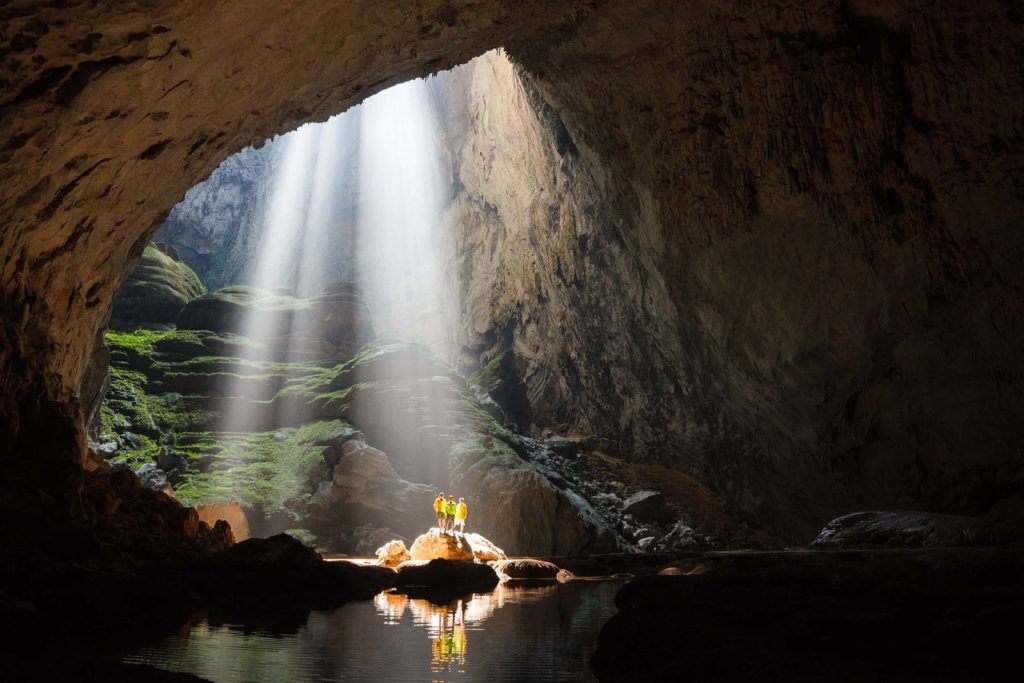
Level of trek: extreme
Highlights: Vietnam’s Son Doong Cave is the country’s most unique cave. Comparing the cave’s current state to other, more advanced caves around the world, it was only locally discovered in 1991. It’s not your typical underground adventure. Son Doong, the world’s biggest cave, takes you to a variety of fascinating habitats. There are just 200 people permitted to explore the cave each year, which is a strict limit. As a result, you must carefully plan your excursion and register in advance.
Best time to trek: from February to August when the weather is cool
How to get there: catch a bus to Phong Nha Ke Bang National Park then pass through the only village in there.
Things to keep in mind:
You should call a travel agency to book for trekking in Son Doong Cave. Normally, you may wait for several months to one year.
Fansipan (Sapa)
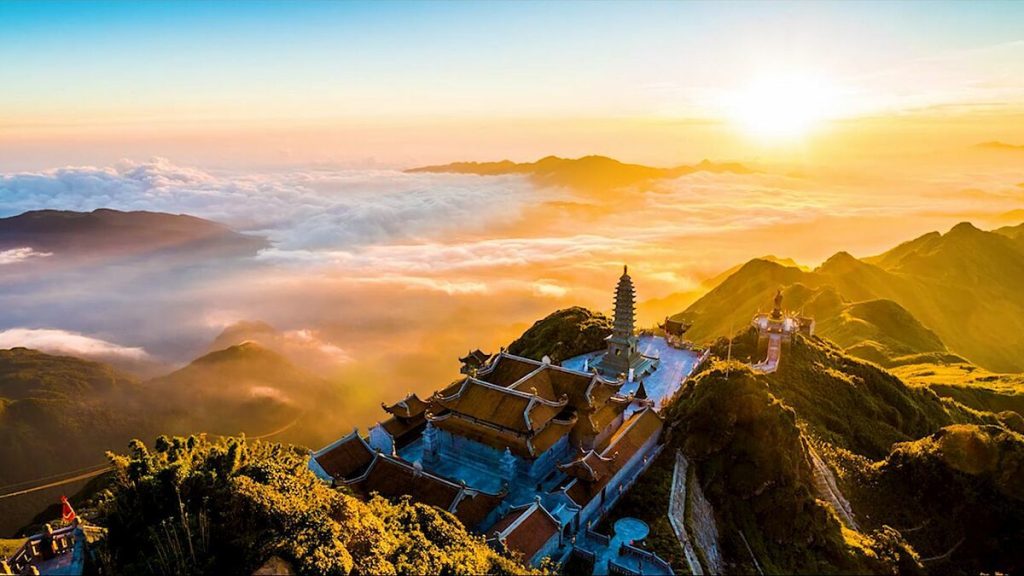
Level of trek: moderate
Highlights: With a height of 3.143 m, Fansipan Mount is the highest mountain in Vietnam and a source of pride for the people of Sapa. Fansipan draws at least 1.000 hikers per day due to the breathtaking vista from the peak and the lovely ascent path. When climbing Fansipan Mount, you may anticipate tranquil gardens and pagodas as well as breathtaking views from the peak. If you don’t have any prior hiking experience, you might want to hire a porter or use cable cars to get to the top of Mount Fansipan.
Best time to trek: from April to May, and from September to November
How to get there:
- Catch a shuttle bus which departs from Old Quarter to Sapa town.
- Or take a train from Hanoi railway station to Lao Cai and then catch a bus to Sapa town.
Popular treks to Fansipan Mount:
- Tram Ton, and return on the same trail
- Tram Ton, return over Muong Hoa valley – Cat Cat stream (20km)
- Doc Mit (Binh Lu ward) to the top of Fansipan (for professional trekkers only)
Things to keep in mind:
The Hoang Lien Son management board must grant approval before you embark on a trek in Fansipan. You must pay some costs, including those for cleanliness, insurance, and forest management. The price is roughly VND 200.000 in total.
Trekking in Vietnam is a must and a favorite thing for any trekkers. The above trekking spots will make your trip to Vietnam more meaningful and interesting. Feel free to contact us if you have any questions about trekking in Vietnam.

